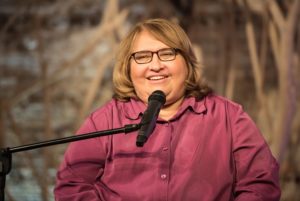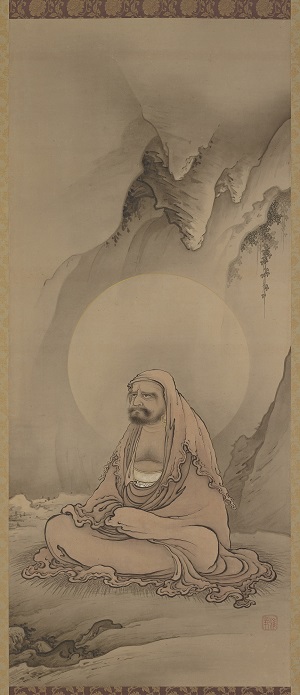
February can be a tough month for love, reminding us of relationships we wish were brighter, deeper, reciprocated or still there. We’re inundated by images of couples walking on a tropical beach or canoodling under the stars. Our heads fill with comparisons, and worse, we imagine we don’t measure up, or have failed at love.
I bring you reassuring news. The words “failure” and “love” live at opposite ends of the universe. Whatever our disappointments in love, we aren’t doomed to relive them. Our minds may get stuck in unhelpful patterns, but love does not. Love isn’t fixed or static. It’s a quality of the heart, a transformative force that blasts through preconceived ideas and stale assumptions. As my wise and wonderful Buddhist teacher and acclaimed author, Sharon Salzberg, said during a recent conversation, “Love isn’t just a feeling. Love is ability.” We can develop our love skills. We can grow as students of love.
 Sharon is my spiritual consigliere. At eighteen she left the States for India on a spiritual quest. Fast forward many years and she is now a world-renowned author/meditation teacher and the co-founder of the Insight Meditation Center in Barre, Massachusetts. I seek her counsel because, like many of us, I feel worn down by the grim news around the globe, the sense of escalating violence at home. As a poet and novelist, as a wife and mother, and as a woman concerned about the state of humankind, my work is to examine and articulate the dilemmas of the human heart.
Sharon is my spiritual consigliere. At eighteen she left the States for India on a spiritual quest. Fast forward many years and she is now a world-renowned author/meditation teacher and the co-founder of the Insight Meditation Center in Barre, Massachusetts. I seek her counsel because, like many of us, I feel worn down by the grim news around the globe, the sense of escalating violence at home. As a poet and novelist, as a wife and mother, and as a woman concerned about the state of humankind, my work is to examine and articulate the dilemmas of the human heart.
The Conditions of Love, my debut novel, explored familial love, friendship, and a young girl’s first experience of passionate love. My novel-in-progress examines how we can survive terrible things and still keep our hearts open. Over the last year I’ve felt an increased urgency to hone my skills as a “love activist,” to search for new approaches and a new set of behaviors for how to respond to violence and the threat of harm. After reading Sharon’s latest book, Real Love: The Art of Mindful Connection, I set up a time for us to talk.
 Sharon, too, has been a lifelong investigator of love. She tells me the story of her younger self who used to think of love “as a commodity in someone else’s hands,” something like a UPS package that others could deliver to her or withhold. When she realized that her ability to experience love wasn’t dependent on others, that love was inside her, her anxiety about being lovable evaporated. Other people or situations might awaken her love, but she “owned her ability to experience love.”
Sharon, too, has been a lifelong investigator of love. She tells me the story of her younger self who used to think of love “as a commodity in someone else’s hands,” something like a UPS package that others could deliver to her or withhold. When she realized that her ability to experience love wasn’t dependent on others, that love was inside her, her anxiety about being lovable evaporated. Other people or situations might awaken her love, but she “owned her ability to experience love.”
Many of us grow up believing our happiness is in the hands of other people. We forget that the ability to love others starts with the ability to love one’s self. This may seem counterintuitive, even sinful to those of us raised to put the needs of others first. Self-love is a radical idea. How many of our parents said, “You really ought to love yourself better, dear.”
If befriending yourself feels difficult, Sharon advises offering kindness and compassion to ourselves as if we were our own best friend. Part of my own loving-kindness meditation practice is to imagine a very young self held in the arms of an older wiser self. Effortlessly, my compassion flows out to the little one.
But what if love has beaten our hearts and crushed our spirits? While we can’t undo the past, our history doesn’t have to be our destiny. Science validates what the Buddha instinctively knew: meditation can rewire our brains. Our marvelous organ of cognition is adaptable, plastic, and capable of regeneration. We’re not condemned to live out the negative consequences of rejection, loss, or trauma forever. Sharon reminds me that feeling connected to others has beneficial physical effects as well as mental ones: our nervous system functions better and we get more control over pain relief.
 No matter what we’ve been through, however troubled, we always have the capacity to awaken our potential to love. According to Sharon, “real love is trying to come alive in us despite the distortions of our culture and the habits of fear, self-condemnation, and isolation.” We’re born with an innate goodness. Our ability to love is our birthright, a tiny seed that may be hidden from view or damaged by experience, but it is indestructible. To keep the seed alive and help it blossom, we can water it with a meditation practice and attention.
No matter what we’ve been through, however troubled, we always have the capacity to awaken our potential to love. According to Sharon, “real love is trying to come alive in us despite the distortions of our culture and the habits of fear, self-condemnation, and isolation.” We’re born with an innate goodness. Our ability to love is our birthright, a tiny seed that may be hidden from view or damaged by experience, but it is indestructible. To keep the seed alive and help it blossom, we can water it with a meditation practice and attention.
How do we practice love? Imagine every encounter as a love encounter—at the grocery store, on a bus, with a pet, or a favorite tree—let each be an opportunity to experience our connectedness. We can even send love to people we don’t like. His Holiness the Dalai Lama considers his enemies to be his best teachers, and encourages us to think of our real enemies as the fear and anger within. The Buddhists liken overwhelming anger to a forest fire that burns up all the trees, destroying its host.
Is it possible to heal the world with love? At an earlier time in my life, I might have thought this sappy. Now I don’t know. I do know that a dedication to alleviating the suffering of others goes a long way in creating happiness within our own hearts. And happiness can encompass a range of emotions. “Anger and compassion,” writes Sharon, “are not mutually exclusive in the brave and willing heart.”
Recently, my husband and I decided to write a new set of marriage vows after decades of being together. You don’t have to be married, or even have a partner to do this exercise. In fact, I highly recommend it as a way to soulfully connect with any person you love. When I sat in silence and brought an image of my husband into my mind-heart, I saw him clearly, with an appreciation for who he is, not for who I’ve wanted him to be. A quality of love is paying attention. Sharon suggests meditation is “attention training.” Love brings us into the mystery of the present moment, to cherishing the smile we see each morning, or delighting in the goofy antics of our dog. Love is a responsibility to ourselves, to our beloveds, to all beings. In moments of stillness, truth comes to us free of our ideas, associations or desires. We start by keeping our hearts open and our compassion ever-ready.
This post appeared in a slightly different form on Dale’s blog on Psychology Today. You can find all of Dale’s blog posts for Psychology Today at
